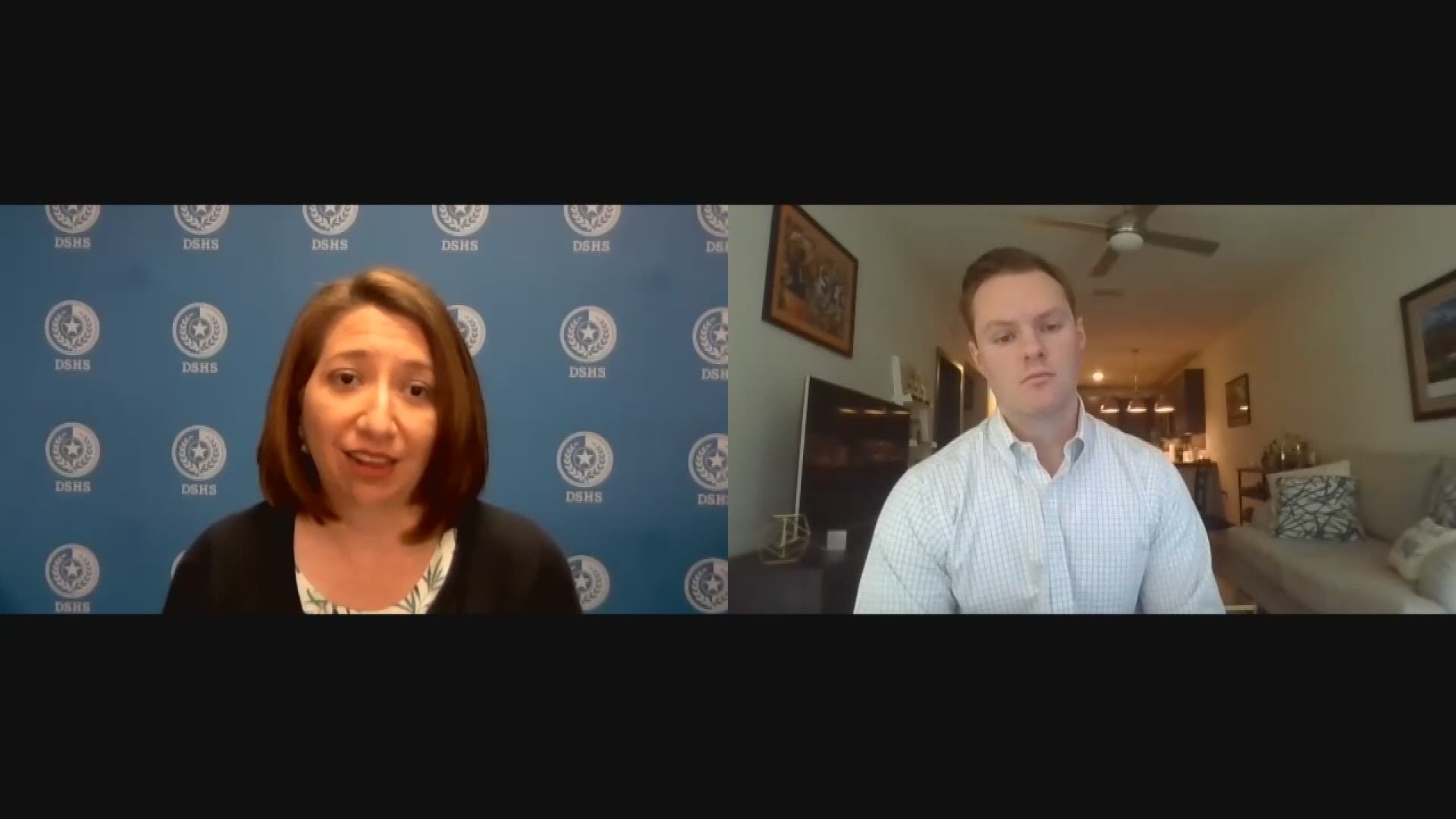FORT WORTH, Texas — With supply now far above demand, Texas is adjusting its strategy to increase coronavirus vaccinations across the state.
For roughly six months, Imelda Garcia has helped lead Texas’s vaccination effort as the chair of the Expert Vaccine Allocation Panel and associate commissioner for laboratory and infectious disease services at the Department of State Health Services.
“Texas has made big strides to get a lot of people vaccinated, but there's still work to be done,” said Garcia.
More than 160,000 12 to 15-year-old children have been vaccinated already, providing a small spike in vaccinations. But lately, demand has fallen to its lowest level since post-winter storm, averaging around 130,000 vaccinations per day over the past week. About half of that number is people getting their first shots.
“Obviously, I'd like to see it higher,” Garcia said. “That's some of the things that we are really trying to do a lot with is our communications and outreach and media.”
Texas is 37th in the United States for vaccinations per person, according to CDC data. The state is behind President Biden’s target of 70% of adults vaccinated by July 4. Right now, 52% of the state’s eligible population has received at least one dose.
Garcia doesn’t believe Texas will hit the president’s goal.
“Probably not. We know that the vaccine demand has definitely slowed down, particularly after the J&J pause,” she said.
Garcia said she often reflects on what has worked and what hasn’t since vaccinations began in mid-December. She believes the strength of the rollout was providers working to meet community needs, but the weakness has been reaching younger adults, who have the lowest vaccination rates.
“A lot of them still have that perception, ‘Well, I'm not going to get sick. It's not that big of a deal.' I think in hindsight, I probably would have really focused more having that conversation earlier with them," said Garcia.
Ohio’s effort to give $1 million prizes to five winners and full-ride college scholarships to five students ages 12 to 17 led to 16% jump in demand, a 55% increase in its vaccination rate among adults 20 to 49 years of age, and a nearly 100% increase in 16 and 17-year-olds.
Maryland, New York and Oregon have launched similar programs.
Garcia said the health department can’t do that on their own, and Governor Abbott’s office sent a statement saying it has authorized several outreach programs but wouldn’t say if they’re planning any incentives statewide.
“Our guidance has been is that that really needs to happen at the local level,” Garcia said. “We also don't want anyone to feel like they're being coerced into getting vaccinated.”
Dallas County officials said they’re already started working on an incentive program they hope to roll out in the next several weeks.
Now, Garcia said teams are going door-to-door in east and northeast Texas where rates are lowest, to encourage and administer vaccines -- even at workplaces.
The highest vaccination rates are in Presidio, Starr and Webb counties at 93%, 75% and 74%, and the lowest are in Gaines, Newton and Panola counties at 20%, 21% and 26% of residents with at least one shot.
Garcia said they’re also planning to spend money on vaccine education with 5 to 11-year-olds, likely eligible in early fall.
“In order to have the most protection not only for our loved ones and our friends and our families, but for the community as a whole, you have to look at the children as part of that vaccination effort,” she said.
For both young kids and upcoming booster shots for adults, Garcia said the new strategy will continuing to have fewer hubs and more locations like pharmacies with supply now higher than demand.
“People will be able to get their booster dose at their convenience whenever and wherever they can possibly find it,” Garcia said. “That's really a game changer.”

